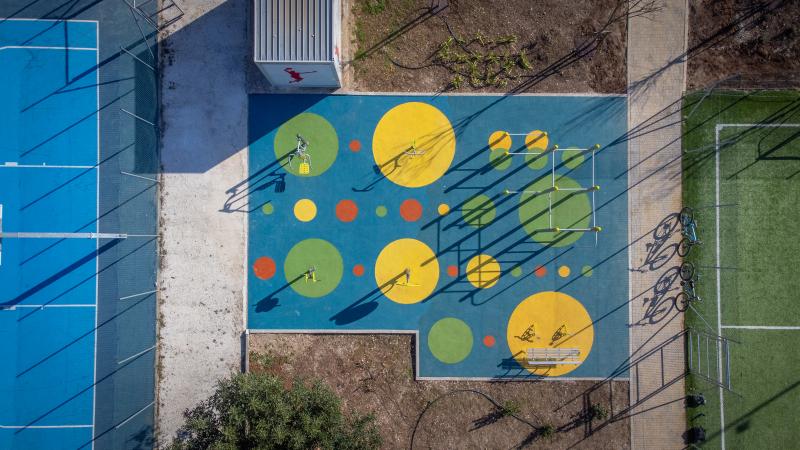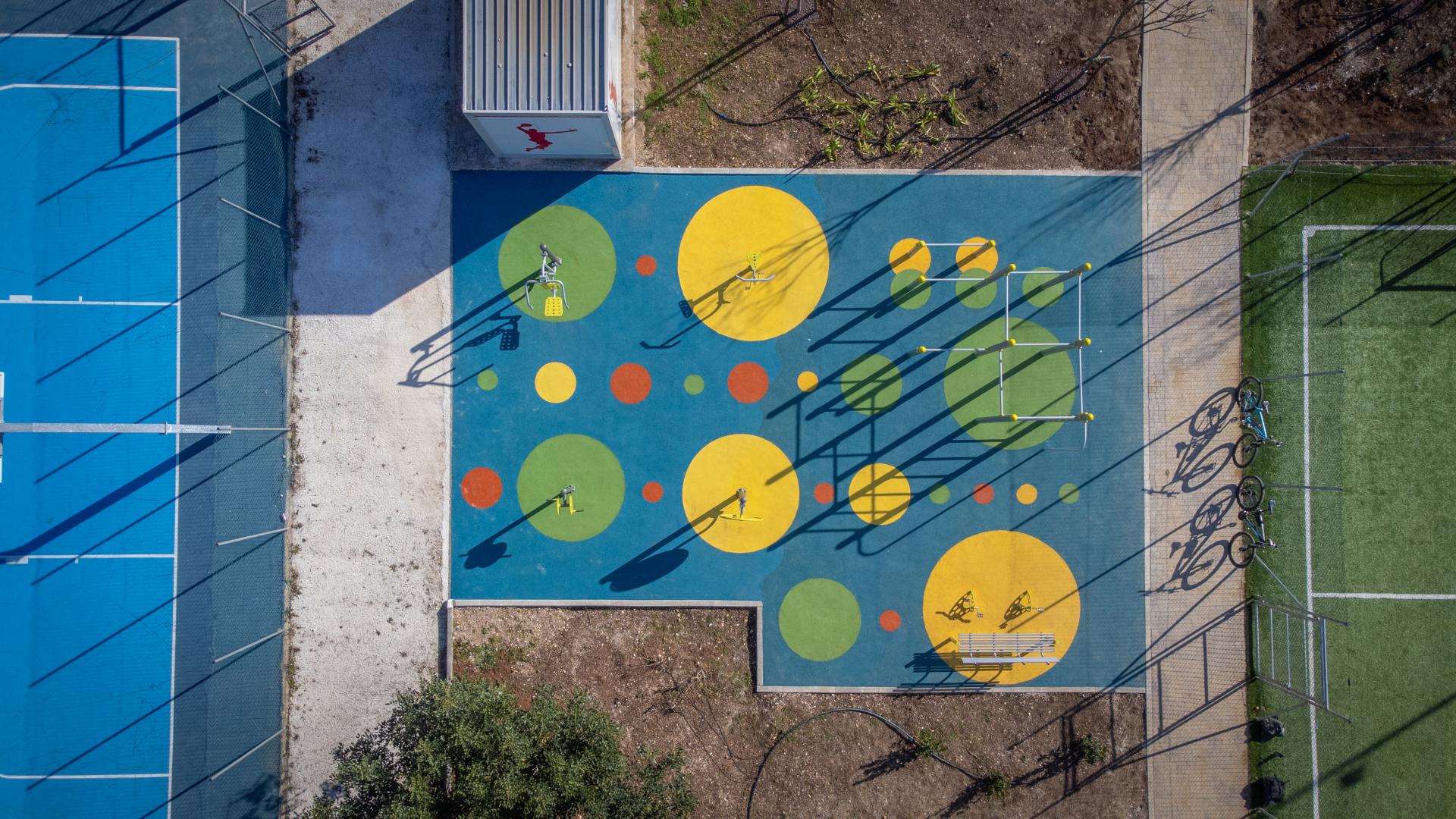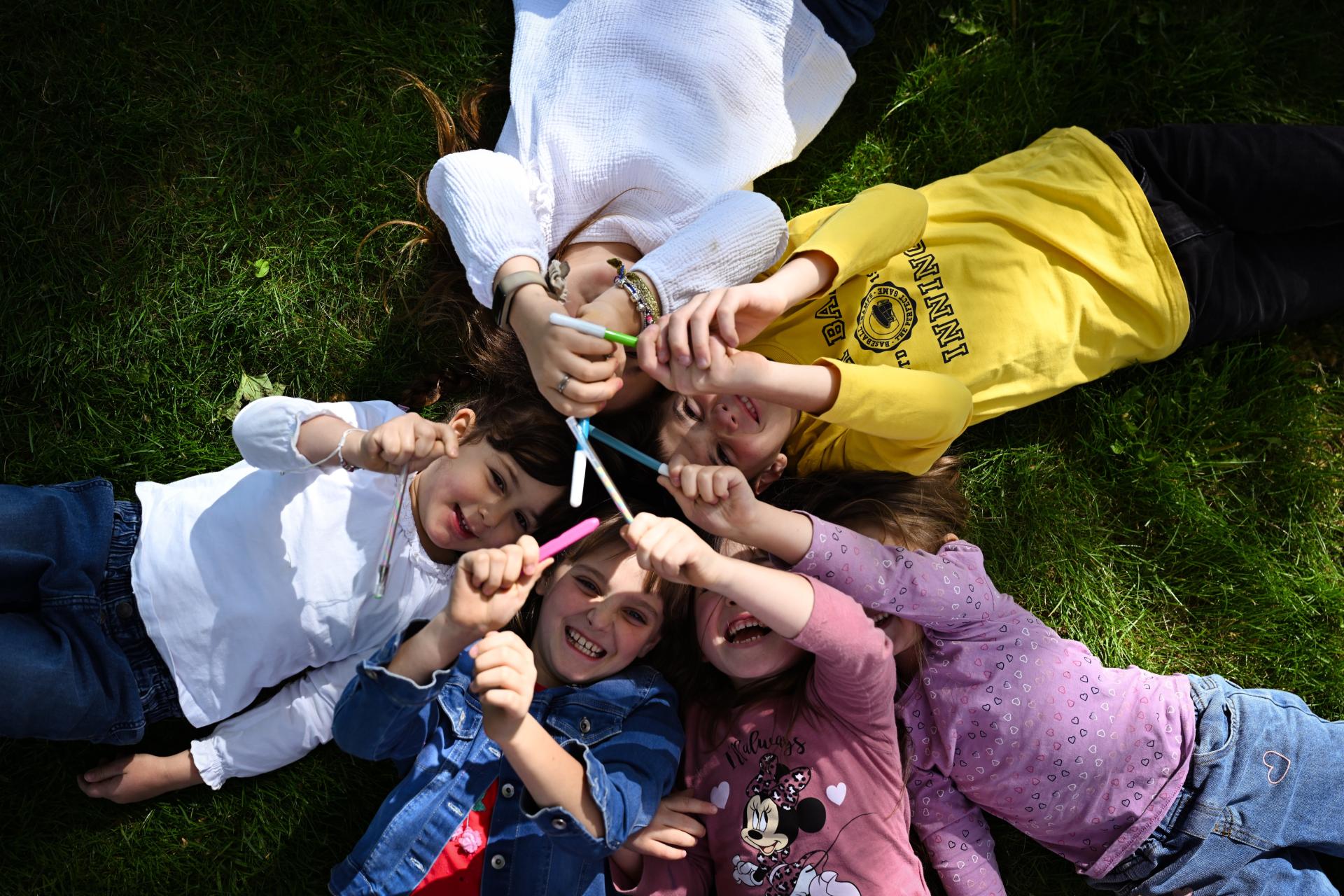
Cast-in-place rubber flooring has emerged as a major innovation in playground design in recent years. A further advancement in the magical world of play, where surfacing is no longer limited to protection but becomes an active element of play itself, with endless possibilities for creating shapes, mixing colours, and even forming three-dimensional figures — thanks to this technique, these can be applied to asphalt or concrete with a minimum thickness of 6-10 cm, even on inclined surfaces up to 45° (previously unsuitable for materials like sand, gravel, bark, or traditional tiles).
Concrete or porous asphalt are the most suitable materials to be covered with this pavement; however, standard materials can also be used, provided that the slab has a minimum slope of approximately 1%.This cast flooring complies with the current standards (UNI-EN 1177) and is applied in a single pour for a seamless, uniform finish, producing a flat surface that fully covers the entire play or sports area. Thanks to the absence of architectural barriers, it is also suitable for use by handicapped children or those forced to move in wheelchairs, minimising the danger of accidents, given the non-slip characteristics that remain even in very wet conditions. This material requires no special maintenance and offers excellent sound insulation, making it an ideal solution for parks in city centres or near residential areas.
The material used for the paving is completely non-toxic, made from recycled and natural raw materials, and is fully recyclable at the end of its life, resulting in a durable product that withstands a wide range of weather conditions while maintaining consistent elasticity across the entire surface. Once installed, the cast surface requires no special maintenance from operators, and can be easily cleaned, when necessary, with a medium-pressure water jet to maintain its appearance and hygiene — unlike sand or soil, which can be soiled by unattended animals. Unlike other fall-dampening systems, it cannot be moved or removed by untrained individuals, allowing the initial investment to be amortised at greater length over time. When installed at the base of slides or under swings, it prevents the formation of pits that typically result from repeated impact in the same spot. Thanks to the ability to mix colours and patterns, the flooring itself can become a playful and engaging feature, or serve to visually define areas of the park intended for different activities, such as separating play zones from sports areas. As already mentioned, the product is suitable for flat, curved, and gently sloping surfaces, can be installed even after the play structures are in place, and blends seamlessly into any type of park, from the simplest designs to themed environments made with a variety of materials, including wood, aluminium, and steel. If needed, any portions that have been damaged — usually due to intentional vandalism rather than wear — can be isolated and repaired at any time.Holzhof's installation teams consist of highly qualified and skilled professionals with extensive experience in the field. Our specialised workers participate multiple times each year in training and refresher courses organised by top certification bodies, hold attendance certificates, and are equipped with modern, innovative tools for installing poured rubber flooring throughout the region.
"The above product must be installed within a temperature range of 8.0°C to 35°C. Installation outside this range is not possible in order to preserve product quality."


20/11/2025 |
Read the full news27/08/2025 |
Read the full news